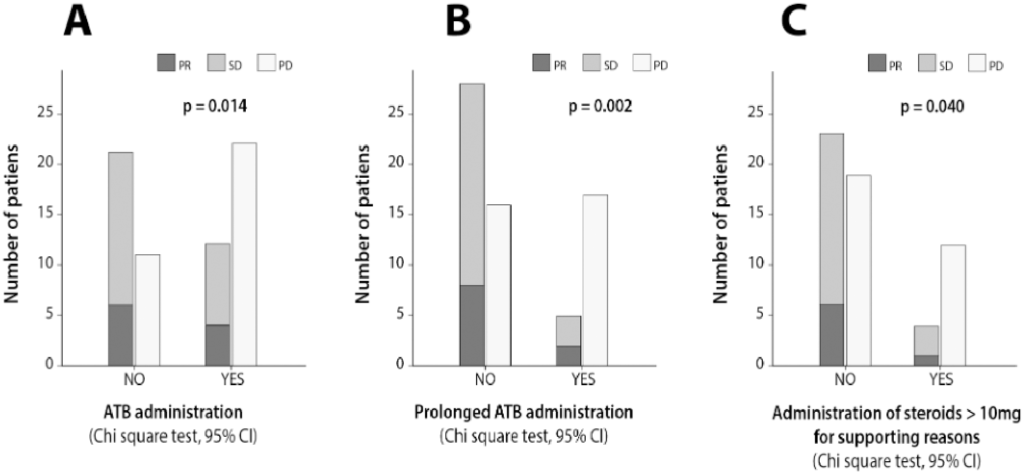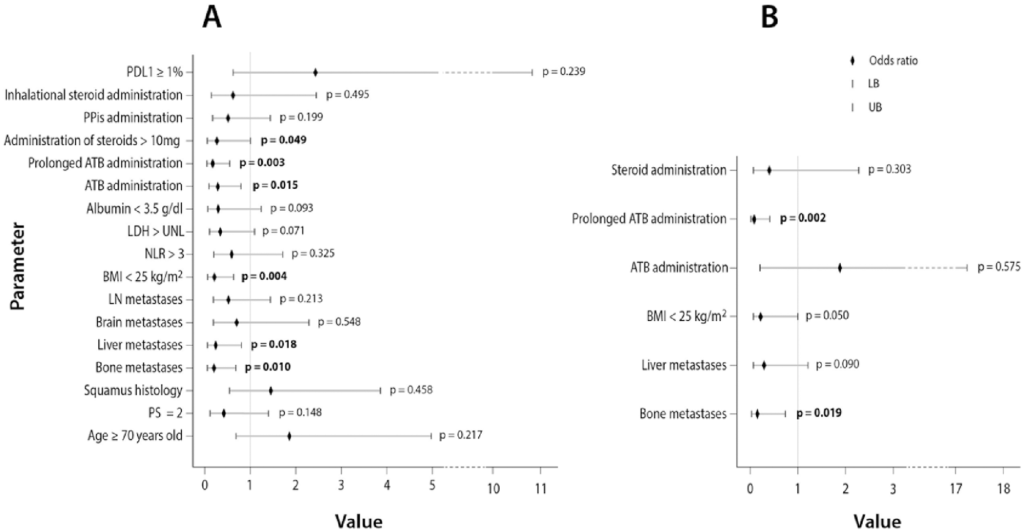Predicting PD-1/PD-L1 inhibitors treatment on metastatic non-small cell lung cancer
Konstantinos Rounis, Department of Medical Oncology, University General Hospital, Heraklion, Crete, Greece
Dimitrios Makrakis, Department of Medical Oncology, University General Hospital, Heraklion, Crete, Greece, Division of Oncology, University of Washington Medical School, Seattle, Washington, United States of America
Chara Papadaki, Alexia Monastirioti, Laboratory of Translational Oncology, School of Medicine, University of Crete, Heraklion, Crete, Greece
Lambros Vamvakas, Konstantinos Kalbakis, Department of Medical Oncology, University General Hospital, Heraklion, Crete, Greece
Krystallia Gourlia, Iordanis Xanthopoulos, Ioannis Tsamardinos, Department of Computer Science, University of Crete, Heraklion, Crete, Greece
Dimitrios Mavroudis, Sofia Agelaki, Department of Medical Oncology, University General Hospital, Heraklion, Crete, Greece, Laboratory of Translational Oncology, School of Medicine, University of Crete, Heraklion, Crete, Greece
PLOS ONE: https://journals.plos.org/plosone/article?id=10.1371/journal.pone.0252537
Abstract
The researchers prospectively recorded clinical and laboratory parameters from patients with metastatic non-small cell lung cancer (NSCLC) treated with 2nd line PD-1/PD-L1 inhibitors in order to address their effect on treatment outcomes.
Clinicopathological information (age, performance status, smoking, body mass index, histology, organs with metastases), use and duration of proton pump inhibitors, steroids and antibiotics (ATB) and laboratory values [neutrophil/lymphocyte ratio, LDH, albumin] were prospectively collected. Steroid administration was defined as the use of > 10 mg prednisone equivalent for ≥ 10 days. Prolonged ATB administration was defined as ATB ≥ 14 days 30 days before or within the first 3 months of treatment. JADBio, a machine learning pipeline was applied for further multivariate analysis.
Their results demonstrate an adverse effect of prolonged ATBs on response and survival and underscore their importance along with the presence of bone metastases, liver metastases and low BMI in the individual prediction of outcomes in patients treated with immunotherapy.
Results
Data from 66 pts with non-oncogenic driven metastatic NSCLC were analyzed; 15.2% experienced partial response (PR), 34.8% stable disease (SD) and 50% progressive disease (PD). Median overall survival (OS) was 6.77 months. ATB administration did not affect patient OS [HR = 1.35 (CI: 0.761–2.406, p = 0.304)], however, prolonged ATBs [HR = 2.95 (CI: 1.62–5.36, p = 0.0001)] and the presence of bone metastases [HR = 1.89 (CI: 1.02–3.51, p = 0.049)] independently predicted for shorter survival. Prolonged ATB administration, bone metastases, liver metastases and BMI < 25 kg/m2 were selected by JADbio as the important features that were associated with increased probability of developing disease progression as response to treatment. The resulting algorithm that was created was able to predict the probability of disease stabilization (PR or SD) in a single individual with an AUC = 0.806 [95% CI:0.714–0.889].

How was JADBio used?
Multivariate analysis by JADBio tool
For the purpose of conducting a multivariate analysis on our data, we applied JADBio, a fully automated machine learning (AutoML) system. JADBio selects the algorithms and methods corresponding to the particular problem, according to the type of data used and possible preferences set by the user. To do this, it employs an artificial intelligence (AI) system responsible for selecting methods and performing tasks, such as data transformation, data pre-processing, feature selection, model selection and results visualization. Furthermore, the system is in charge of selecting which of their hyper-parameters to optimize. The combination of methods used and their corresponding hyper-parameters is defined as a configuration and these methods are applied using the 10-fold cross validation protocol. Thus, JADBio produces thousands of different models, ranking them based on a scoring metric, in our case, area under the receiver operating characteristic (ROC) curve (AUC), and outputs the best performing one. To eliminate the possibility of overestimating the final predictive performance, JADBio uses a bootstrap-based method to correct it [24]. Using the same method, it calculates the confidence intervals of the resulted performance.
In their analysis, they used JADBio for binary classification modelling for the prediction of the probability of a single individual to achieve DS (PR or SD vs PD) with ICIs as second line treatment. The feature classification of the parameters used as input in JADBio is demonstrated in S1 Table. The tool applied the following modelling algorithms: support vector machines (SVM) with full polynomial and Gaussian kernels [25], random forests [26], ridge logistic regression [27], and decision trees [28]. The performance metric we chose over the several ones available at JADBio, is the AUC. In most cases, the result of an analysis will be a complex model, incomprehensible to the human user. To aid in that regard, JADBio additionally outputs the best interpretable model. In their work, they report the performance estimation of the best performing model.

OTHER
Do you have questions?
JADBio can meet your needs. Ask one of our experts for an interactive demo.
Stay connected to get our news first!
Do you have questions?
JADBio can meet your needs. Ask one of our experts for an interactive demo.

Join the JADai Community!
Sign up with a FREE Basic plan! Be part of a growing community of AutoML enthusiasts
GET STARTED



